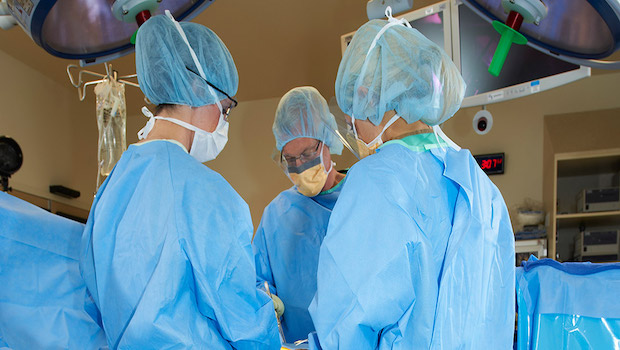Question:
What is the recommendations for long sleeves attire in OR regarding the AORN recommendations?
Answer:
In the revised AORN surgical attire guideline, the recommendation for arms being covered during preoperative patient skin antisepsis is conditional. A conditional recommendation may be implemented, but the degree of implementation will likely vary based on the benefit-harm assessment for the specific setting. The benefits of covering the arms likely outweigh the harms; however, more research is needed to determine the effect of covering the arms on SSI rates. Researchers compared the rates of air contamination during preoperative patient skin antisepsis for a simulation surgery in three hospitals. They completed four experiments in each hospital; study participants had uncovered arms in two experiments and covered arms (ie, with sterile gowns and gloves) in the other two experiments. The researchers noted a decrease in skin particles and the amount of Micrococcus in the OR environment when arms were covered. The researchers recommended covering the arms with long sleeves during preoperative patient skin antisepsis. Because this was a simulated OR environment, additional research in live surgery settings is needed to determine the effect of covering the arms on SSI rates and any patient-related outcomes.
In another study, researchers completed an independent cost analysis for the use of disposable long-sleeved jacketsIn the revised AORN surgical attire guideline, the recommendation for arms being covered during preoperative patient skin antisepsis is conditional. A conditional recommendation may be implemented, but the degree of implementation will likely vary based on the benefit-harm assessment for the specific setting. The benefits of covering the arms likely outweigh the harms; however, more research is needed to determine the effect of covering the arms on SSI rates. Researchers compared the rates of air contamination during preoperative patient skin antisepsis for a simulation surgery in three hospitals. They completed four experiments in each hospital; study participants had uncovered arms in two experiments and covered arms (ie, with sterile gowns and gloves) in the other two experiments. The researchers noted a decrease in skin particles and the amount of Micrococcus in the OR environment when arms were covered. The researchers recommended covering the arms with long sleeves during preoperative patient skin antisepsis. Because this was a simulated OR environment, additional research in live surgery settings is needed to determine the effect of covering the arms on SSI rates and any patient-related outcomes. In another study, researchers completed an independent cost analysis for the use of disposable long-sleeved jackets in the perioperative areas of two facilities in the same hospital system. The added cost of implementing the disposable jackets was $1,128,078 annually. There has been no research evaluating the benefits or harms of covering the arms in the semirestricted or restricted areas; therefore, no recommendation can be made on covering the arms in those settings. Further, the AORN guideline does not include a recommendation related to the use of disposable jackets.
AORN Journal, Feb 2020, Vol. 111, Issue 3, Page 352-353.
[/s2If]
Resources:
AORN Journal, Feb 2020, Vol. 111, Issue 3, Page 352-353.


